The long grays and quiet browns of winter are still here and going strong, not letting up at all it seems. Even the sun which does certainly shine brighter now, is no match for the foreboding clouds that are still occasionally gracing the ground with sprinkles of icy, white flakes. Thankfully, the powdered sugar of white is gone as quick as it came, once the mighty sun returns. The snowbirds like the White-Throated Sparrow and the Dark-Eyed Junco still here, happy in their winter digs. Though the wind does seem relentless of late.
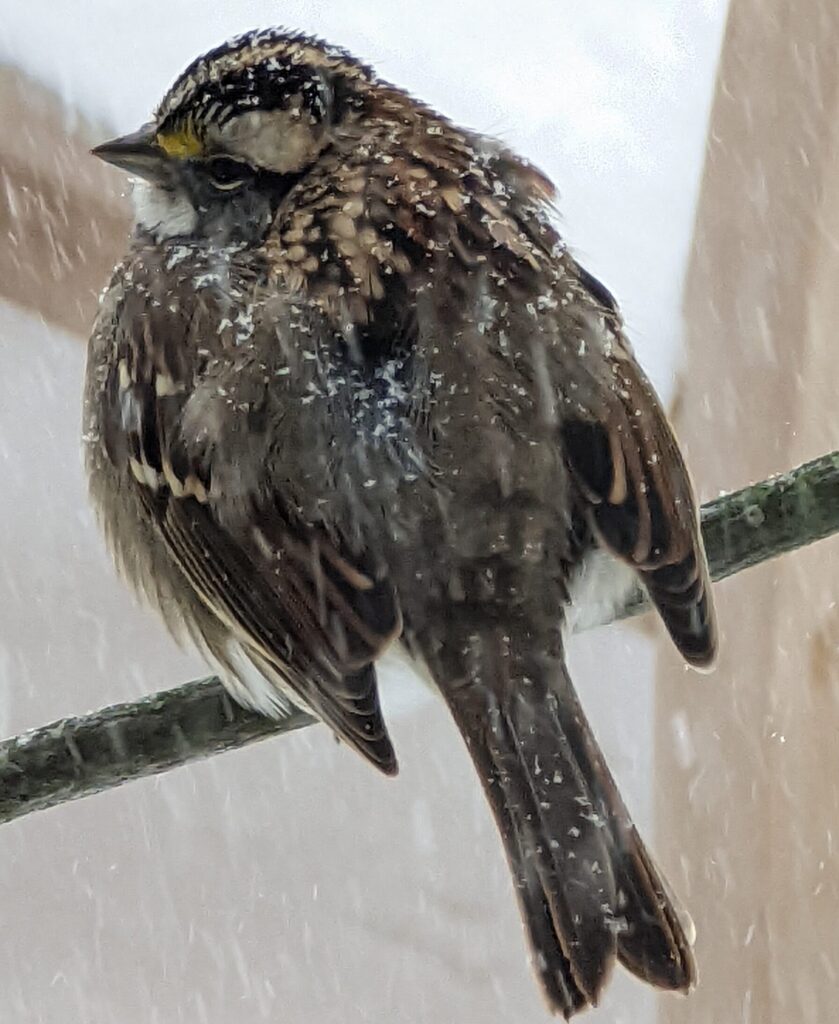
White-throated Sparrow in the Snow
Sometimes a long walk in the woods is all you need to clear your head when your mind is racing in a million directions (like the wind), possibly consumed with thoughts of warmth or other personal contemplation. Shinrin-yoku is based on that very principle, using the forest as an outlet of personal therapy. Taking in the sights, sounds and atmosphere of the forest around you is what the Japanese art of “Forest Bathing” is all about. Never does one’s imagination ignite as much as it does in the forest. Put some wind rustling though tall pine trees, and I will melt into a state of relaxation zen. Even without wind in the pines though, a walk through the woods can promote nothing but good things in our mental and emotional state.
A recent walk through the woods in the Sourland Mountain region of central New Jersey was my most recent escape into Shinrin-yoku. Even though it was late March, I walked along with strong intention to find some early migratory song birds, and if I was really lucky, photograph a few. The Eastern Towhee was of particular interest to me on this day as I had already heard his proverbial tweet! in my own backyard. He sings away a terse version of his melodious “Drink yoooourrr teeeeeaaaa!!!” by only taunting me with the truncate whistle of “Drink”. He is just getting warmed up. Spring is just barely here, after all, and so is his whole song. My down coat wants to be hung up for the season like an old hat, but there it stays, in the front closet a few more days. Then, even a few more maybe. No foolin’.
Back in the forest, the trail is surprisingly dry, because of that sun and probably a lack of hard rain in the past several days. There is little activity in the woods, I don’t even see a squirrel mulling about. The occasional ascending rattle of a Northern Flicker or drumming of a woodpecker is all that swirls in the soundscape above my head. Even the frogs are silent as the temperature yo-yos every 12 to 24 hours not making up its mind playing not very nice weather-related jokes on us. The trail meanders through a bunch of fallen trees. Some by nature herself, and some the work of trail maintenance volunteers. My heartbeat increases steadily as I hike a decent hill and I start to wonder if I wore the wrong boots as my foray into the forest hits an incline, typical in the Sourlands. (Yes, yes I did wear the wrong boots, sigh).
Giant rocks surround me. Some so moss covered that they looked ancient (which they practically are).
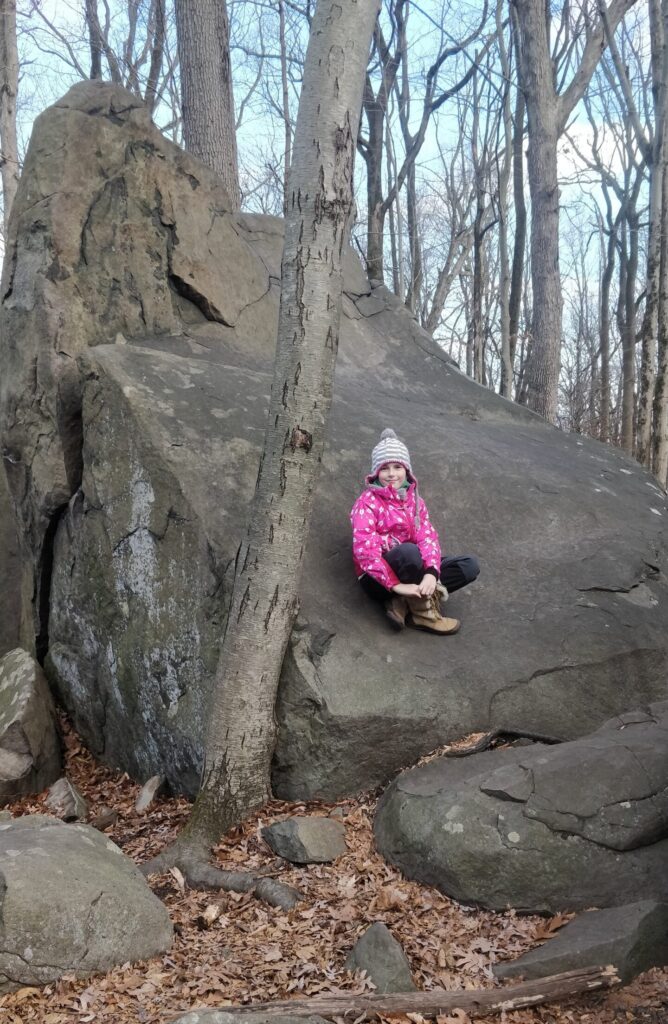
Photo of boulders in the Sourland Mountains in Hillsborough, NJ, kid for scale
Some boulders so big you could set up a picnic for a party of four on top of them, if it would just warm up a degree or two, or twenty. Some jutting out of the mountainside at such an angle that the crevice beneath looked like a perfect lair for a fox or other woodland creature. These gargantuan Sourland rocks are spectacular and iconic to the region. Also, a welcome spot to sit for a rest and wonder if I sit still enough, the Towhee might find me, instead of the other way around. No, it didn’t work out that way, but I had high hopes.
The waning winter forest gives way to a special treat in the Sourland forest floor. Your visual bonus points for your forest bathing walk. The equivalent of a rainbow, but in flower form. Peeking up at me through the thick leaf litter that had protected it all winter are tiny flowers emerging. Small and unmistakable. Not a trompe-l’œil, no April Fool’s joke here.
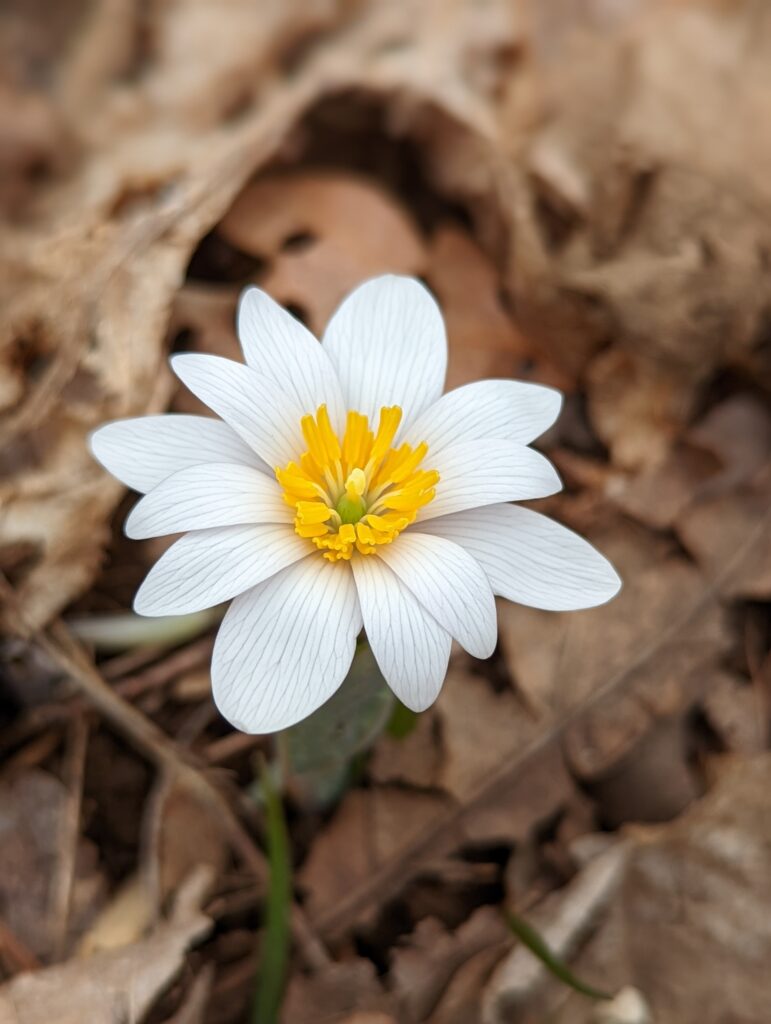
Bloodroot (Sanguinaria canadensis)
The spring ephemeral flowers of this region are hidden jewels*, but not for long. Short-lived, just like a rainbow, dotting the coffee-colored floor like little Easter eggs artfully placed. Some even opening up only when the sun shines, keeping closed on a rainy day. It seems that those ones only like to herald Spring when the sun is shining. (I can’t say I disagree with that school of thought Hepatica). Some are so small, diminutive is more accurate. Some are so breathtaking that a simple close up may make it to your new favorite as a home or lock screen on your Smartphone. But as that brighter sun shines upon the treetops, covering the forest canopy with leaves those little beauties on the forest floor are quenched and gone.

Cutleaf Toothwwort (Cardamine concatenata) not quite in bloom yet
For a native plant enthusiast like myself, spring ephemeral season is like pick your own strawberry season. It’s possible to be over before you knew it began. But it was just snowing, how can there possibly be flowers on the forest floor? They exist not just for us to enjoy. They exist as part of a delicate ecosystem that requires them. Early blooming plants feed hundreds of native solitary bee species that emerge at around the same time, not to mention the honey bees too. The beauty of these plants though they are small, is no April Fool’s joke. They come back. Every. Single. Year.

(Erythronium americanum), the trout lily, yellow trout lily, or yellow dogtooth violet, not quite ready to flower, yet!
I never did find my Towhee that day. That is okay. There are plenty of harbingers of Spring. You just have to be sure to keep your warm coat at the ready. And just like winter will eventually go away, so will my down coat. But the next time the sun shines, I am still looking for Ms Hepatica, and Mr Towhee!
*The pictures of spring ephemeral plants of the Northeast shown here are only a selection that I saw while hiking this trail:
There are many more spring ephemerals in this region. I am still in the process of learning them…and each time I do, I want to know more!!!! The beauty of nature never fails to amaze and delight the senses.
Learn more about hiking in and around this area by visiting The Sourland Conservancy at https://sourland.org/maps/
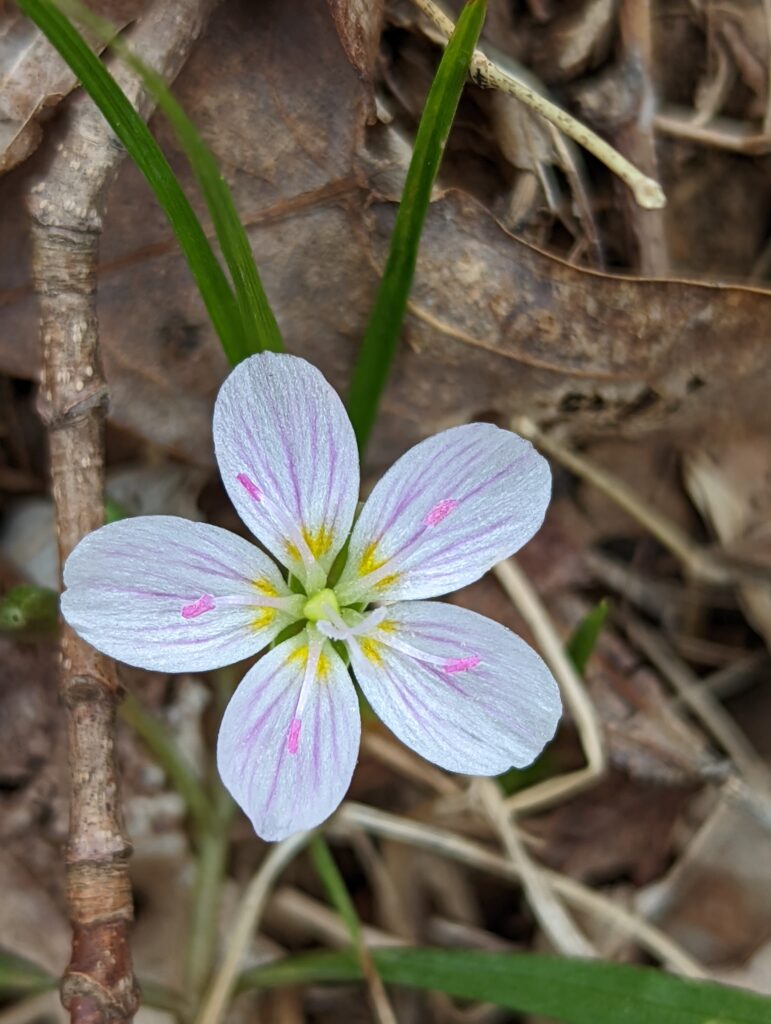
The aptly named Spring Beauty (Claytonia virginica)
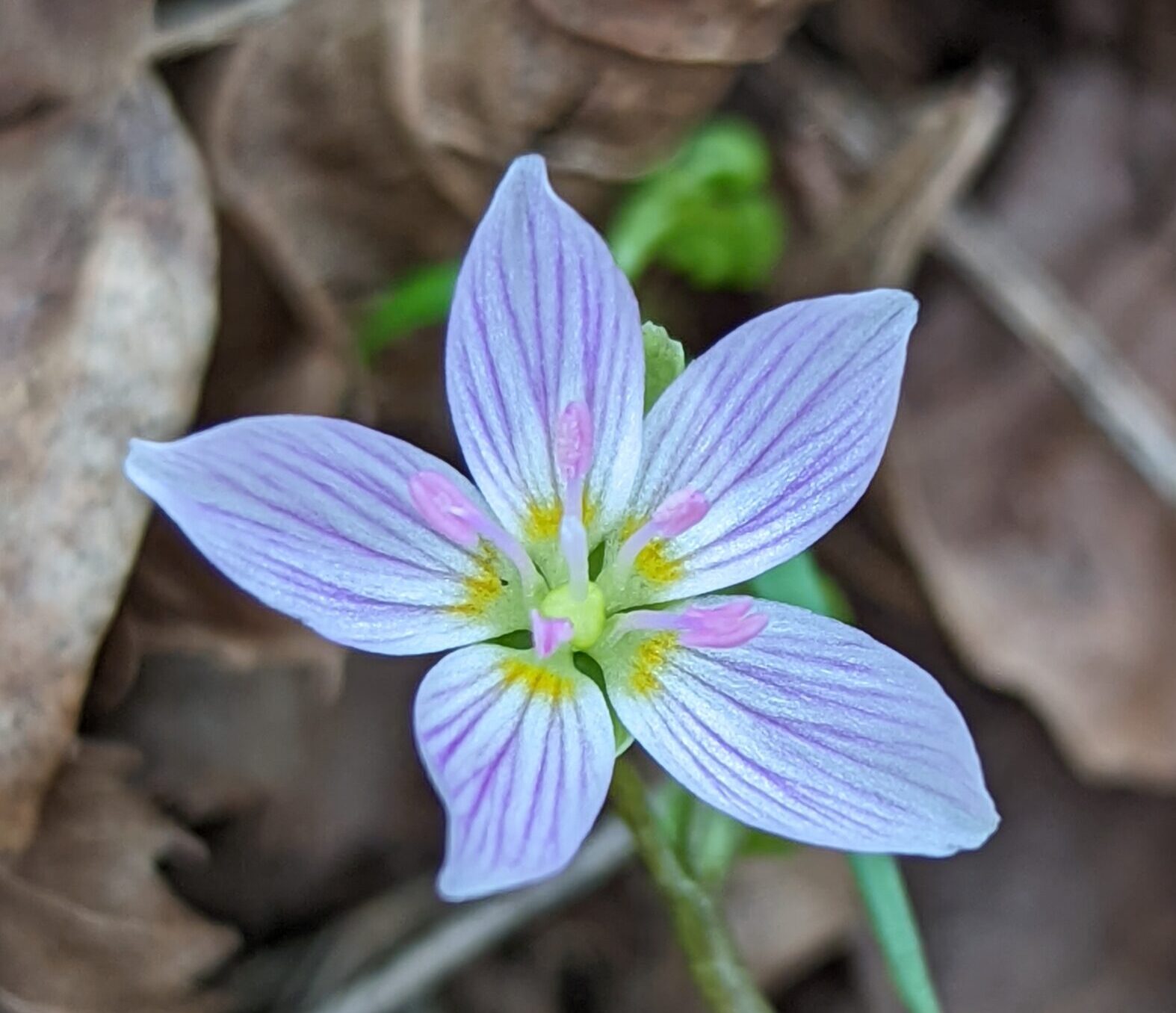
No responses yet